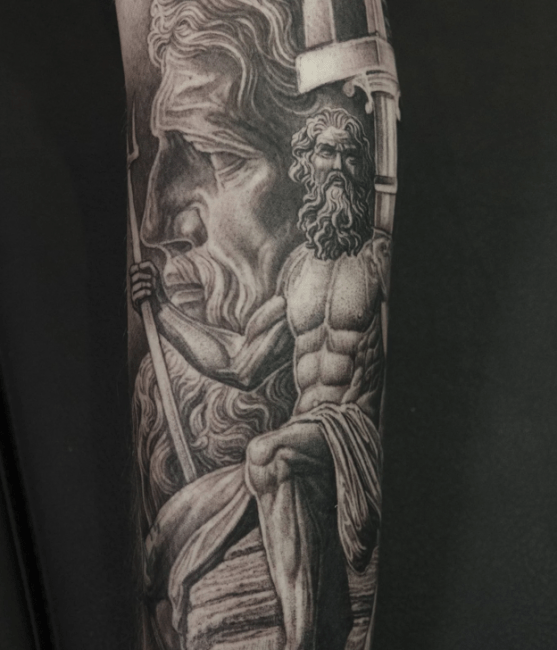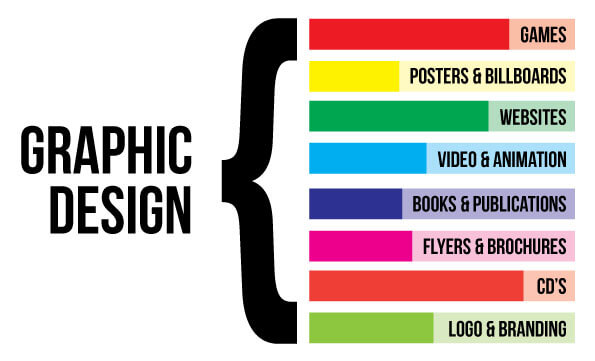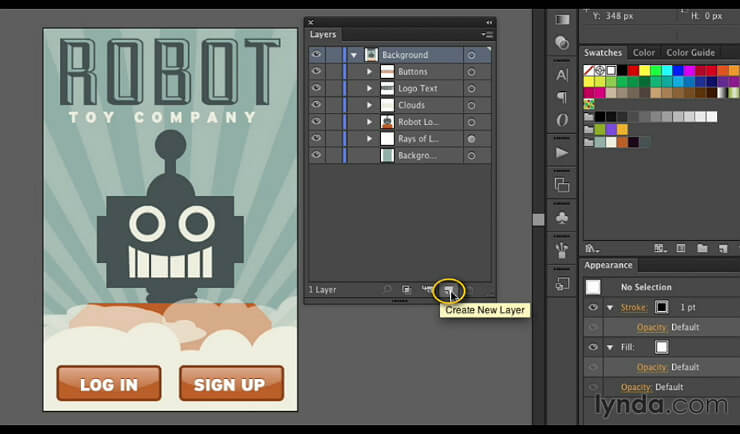From the ancient cave paintings to the captivating billboards of today, graphic design has been an integral part of human communication for centuries. This evolving discipline has not only adapted to the changes in media but also shaped the way we interact with visual information.
In this article, we’ll delve deep into the historical developments, technological advancements, and significant moments that have shaped the field of graphic design over time.
Early Beginnings: Prehistoric Art to Manuscripts
The roots of graphic design can be traced back to early human history when prehistoric men used cave paintings to communicate stories and experiences. Symbols and pictographs were used to simplify complex ideas, an endeavor that could very well be considered the earliest form of graphic design.
The advancement of civilization led to the development of alphabets and written language. Manuscripts in the Middle Ages were crafted meticulously by hand, often featuring elaborate illustrations and ornamental lettering, adding a visual dimension to written content. The use of color, form, and texture in these texts provided a rich context, giving birth to early concepts of layout and typography.
The Printing Revolution: Gutenberg to Newspapers
The invention of the printing press by Johannes Gutenberg in the 15th century was a pivotal moment in the history of graphic design. The printing press made mass production of texts possible, and with that came the challenge of designing those texts in an easily readable and appealing form.
The 19th century saw the rise of newspapers and magazines, and with them, the development of editorial design. This era focused on principles like grid systems, columns, and headings that helped in the clear organization of information. As these periodicals were mass-produced, graphic design started to gain recognition as a field requiring specialized skills and creativity.
The Birth of Modern Graphic Design: 20th Century
The early 20th century was marked by the emergence of different art movements such as Cubism, Futurism, and Surrealism, which had a profound impact on graphic design. The Bauhaus School in Germany was particularly influential in shaping modern design principles, promoting the idea that design should be functional yet visually pleasing.
During the post-World War II era, the advent of advertising led to the diversification of graphic design into various sub-disciplines like branding, packaging, and logo design. Agencies like Ogilvy & Mather and designers like Paul Rand became icons in the field, establishing standards and styles that are revered even today.
The Digital Age: Computers and Beyond
The introduction of computers and design software in the latter part of the 20th century revolutionized the field. Tools like Adobe Photoshop and Illustrator became industry standards, making it easier for designers to experiment with complex layouts, digital illustrations, and typography.
The internet and smartphones brought new challenges and opportunities for graphic designers. Web design and user interface design became integral skills, focusing on not just aesthetics but also usability and user experience.
The Future: Virtual Reality and AI
As we look to the future, emerging technologies like virtual reality (VR), augmented reality (AR), and artificial intelligence (AI) offer new avenues for graphic design. From immersive 3D experiences to AI-assisted design tools, the possibilities are endless.
The history of graphic design is a tale of constant evolution, adapting to technological advancements and cultural shifts. While the tools and media may change, the fundamental objective remains the same: to communicate ideas effectively and aesthetically. As we continue to venture into new digital frontiers, the role of graphic design will only become more significant, serving as a bridge between technology and human interaction.
The Role of Social Media and Influencers
One can’t talk about the modern landscape of graphic design without acknowledging the immense influence of social media platforms. Instagram, Pinterest, and even LinkedIn have become portfolios for designers, offering a global stage to showcase their work.
Social media also allows for instant feedback, creating a dynamic dialogue between designers and their audiences. It’s worth noting that design trends often go viral on these platforms, further emphasizing the speed at which graphic design evolves today.
Influencers and thought leaders in the field also use social media to share their insights, helping to shape public opinion about design trends and practices. Names like Paula Scher, Michael Bierut, and Jessica Walsh are just a few who wield considerable influence in how we perceive modern design.
Sustainable Design and Social Responsibility
In recent years, the notion of sustainable and socially responsible design has gained prominence. Designers are increasingly aware of the environmental impact of their work, whether it’s the materials used in physical products or the energy consumption of digital platforms.
Concepts like minimalism and design ethics are making their way into the mainstream conversation, urging designers to consider the broader implications of their work.
The Freelance Economy and Remote Work
Another notable trend affecting the field is the rise of freelance and remote work, accelerated by the global COVID-19 pandemic. Designers are no longer tied to physical offices and can collaborate on international projects from the comfort of their homes.
This democratization has had a profound impact, allowing talent from around the world to contribute to the global design landscape. Websites like Behance and Dribbble serve as platforms where freelancers can showcase their portfolios and connect with potential clients.
Interdisciplinary Approach and Design Thinking
One of the most fascinating developments in contemporary graphic design is the increasing overlap with other disciplines like psychology, marketing, and even data science. The principles of design thinking, which involve a problem-solving approach that integrates empathy and user-centered focus, are being applied beyond traditional design roles. This holistic, interdisciplinary approach is helping to solve complex problems in fields as diverse as healthcare, urban planning, and software development.
The Importance of Adaptability
If there’s one overarching lesson to take from the history of graphic design, it’s the importance of adaptability. As the tools, platforms, and social landscapes change, designers must be willing to learn and evolve. Whether it’s mastering new software or understanding the psychological nuances of user experience, a designer’s education never truly ends.
A Dynamic Field with Endless Possibilities
The journey of graphic design from primitive symbols to sophisticated digital platforms is a testament to human ingenuity and adaptability. As we look forward to the future, filled with technological advancements and evolving social needs, it’s clear that graphic design will continue to serve as a cornerstone of human communication. With avenues like AR, VR, and AI opening up, the future holds endless possibilities for this dynamic and ever-changing field.
So, whether you’re a seasoned designer or a casual observer, understanding the evolution of graphic design can offer valuable insights into the role of visual communication in our lives. It is more than just an art or a skill; it’s a continually evolving language that helps define our interaction with the world around us.
Top 10 Books About the History of Graphic Design
The history of graphic design is a rich tapestry that stretches back to ancient civilizations and evolves right into the digital age. For those interested in delving into this fascinating subject, books offer a comprehensive way to explore the evolution, principles, and pioneers of the field. Below are the top 10 books that anyone interested in the history of graphic design should consider adding to their reading list.
- “Meggs’ History of Graphic Design” by Philip B. Meggs and Alston W. Purvis
Widely regarded as the definitive text on the subject, this book offers a comprehensive look at the history of graphic design from its earliest origins to contemporary developments. It covers everything from typography and iconography to advertising and digital design.
- “Graphic Design: A New History” by Stephen J. Eskilson
This book provides a comprehensive overview of graphic design history, touching upon various movements, technologies, and societal changes that have influenced the field. It’s an excellent resource for both students and professionals interested in understanding how graphic design has evolved over time.
- “The Elements of Graphic Design” by Alex W. White
Though not strictly a history book, “The Elements of Graphic Design” delves into the fundamental principles that have guided the field from its inception. It’s essential reading for anyone looking to understand the building blocks of design theory.
- “Graphic: 500 Designs that Matter”
Curated by the Phaidon Editors, this book offers a visual timeline of the most influential graphic designs from the past. It’s more of a reference material than a narrative history but is incredibly enlightening when it comes to understanding design’s impact on culture and society.
- “Designing the Modern Magazine” by Jeremy Aynsley
This book specifically focuses on the role of magazines in the evolution of graphic and editorial design. A must-read for anyone interested in how print media shaped modern graphic design.
- “Graphic Design: The New Basics” by Ellen Lupton and Jennifer Cole Phillips
While this book leans more towards instructional material, it offers historical context for each of the essential elements and principles of design. It’s a good resource for seeing how the past and present converge in design fundamentals.
- “Graphic Design Visionaries” by Caroline Roberts
This book profiles 75 of the world’s most influential designers, offering a look into how their work has contributed to the field at large. It’s a wonderful book for understanding the human element and the creative minds behind iconic designs.
- “No More Rules: Graphic Design and Postmodernism” by Rick Poynor
This book is excellent for those looking to understand the postmodern era of design. It delves into how designers broke away from established rules to create a more fragmented, deconstructed visual language.
- “The Graphic Design Idea Book: Inspiration from 50 Masters” by Steven Heller and Gail Anderson
Although not purely historical, this book provides case studies and examples from some of the most iconic designers in history, giving insight into their creative processes and impacts on the industry.
- “The Vignelli Canon” by Massimo Vignelli
In this book, the legendary designer Massimo Vignelli outlines the principles behind his work, offering a look into his methodology and philosophy. Although not a history book per se, understanding Vignelli’s impact on the field offers a unique historical perspective.
Whether you’re a student, a practicing designer, or simply someone interested in the history of graphic design, these books offer a range of perspectives to help you understand the evolution of this dynamic field.
Each book has its unique angle and focus, allowing readers to gain a well-rounded understanding of the topic. From the earliest beginnings in print to the ever-changing digital landscape, these books will guide you through the milestones that have shaped graphic design into what it is today.









